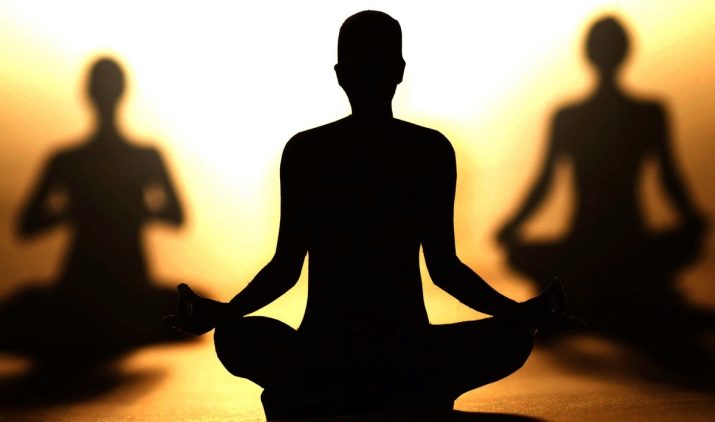Description of acrophobia and methods of struggle
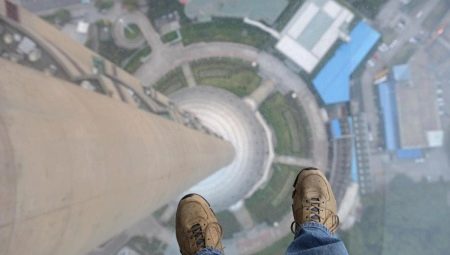
Fear of heights is one of the most common phobias that occurs in both children and adults. The reasons for the onset of anxiety, anxiety and panic associated with height are diverse and largely individual. Currently, this phobia is quite successfully treated with the help of qualified psychologists or psychotherapists.
What it is?
The fear of heights in psychology is called acrophobia. This phobia appears in people for various reasons, delivering rather unpleasant and serious experiences. According to the theory of evolution, fear is necessary for a person to develop internal resources in extreme living conditions, however, fear to an extreme degree becomes harmful to the body and even dangerous to health.
In the early stages, acrophobia is accompanied by a depressed psychological state, anxiety, but in the later stages, somatic symptoms are also connected: uncontrollable tremors, pain, rapid heartbeat, increased sweating.
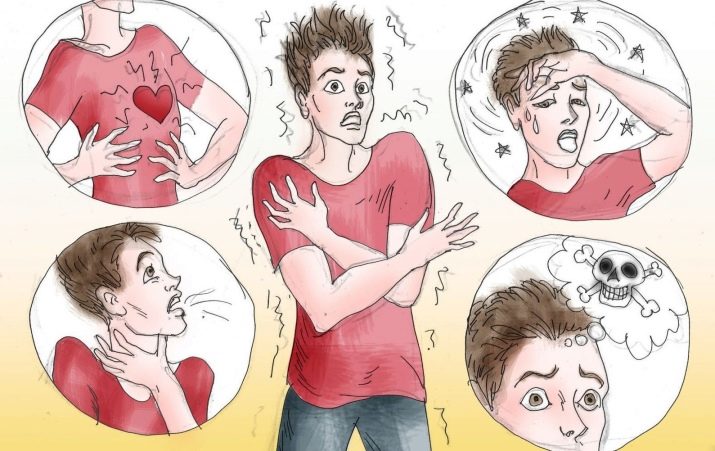
Fear of heights is natural for a person, it protects us from risky actions and forces us to be careful on the hills, where you can fall and be crippled. However, when she is comprehensive and intrusive, and its manifestations cause significant discomfort, we can talk about a phobia.

For many, the distinction between ordinary fear and phobia seems very vague, but psychologists clearly distinguish this.
Difference from ordinary fear
In medicine and science, it is customary to distinguish between the natural caution in high-altitude terrain and the pathological, uncontrollable fear of being on top. In the first case, a person is afraid, but can control himself, feels mild discomfort, but is in control of himself and the situation. In the second case, the disease is obsessive fear that cannot be overcome, it significantly interferes with daily life.
Ordinary anxiety arises only when a dangerous situation occurs (for example, when a person has his first flight on an airplane or a jump into the water) and becomes stronger with a lack of full-fledged information, as well as with a lack of time to study the situation, choose the right decision, and prepare. This is common to all healthy people and is absolutely normal.
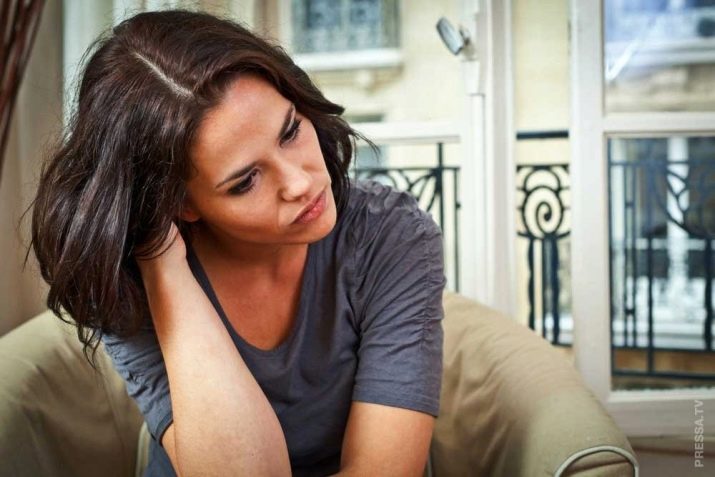
Pathology occurs when the phobia is not tied to a real threat to life.
It has various clinical manifestations - both at the psychological and physiological levels. There is invariably a rather thin line between normal fear and pathology in psychology. It is very easy to cross it - it is enough to get into unfavorable circumstances and any of us is more or less likely to develop acrophobia.
The obsessive fear of heights is still defined in our subconscious, and in some individuals predisposed to it, it can become stronger, more palpable and arise more and more often and obsessively, becoming an obvious disorder. This is not a rational feeling, but an uncontrollable fear. The patient himself does not understand why he is so afraid of height, cannot explain his behavior and cannot control himself. That's why getting rid of a phobia is very difficult - much more difficult than from ordinary fear.
Acrophobia is a real panic horror that over time takes possession of the patient more and more, and spreads to all areas of his life. Such behavior can lead to social isolation, both partial and almost complete. A person under the influence of such a disorder is deprived of freedom, constrained, cannot participate in many social activities, and sometimes he is embarrassed by his reaction to the height in front of other people.
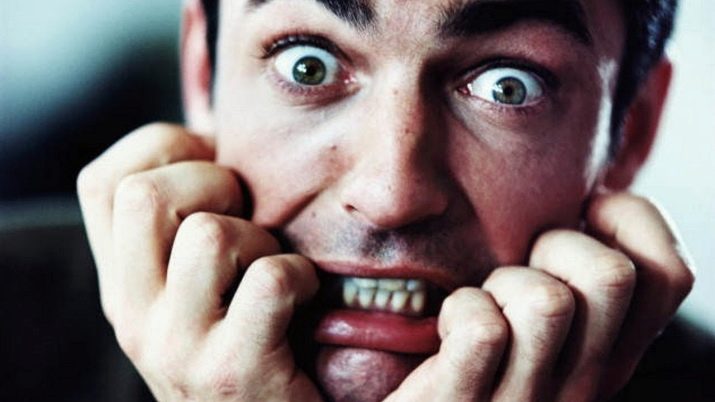
Acrophobia is a lot of inconvenience. A person becomes truly addicted to his unconscious and all-encompassing fear. He cannot go hiking with friends, relax in ski resorts, fly or even walk quietly up the stairs. It often happens that an acrophobe refuses to visit relatives and friends who live in high-rise buildings.
Transparent floors in modern buildings and bridges over rivers also cause painful discomfort. On similar objects in a sick individual in the literal sense panic arises: he literally cannot move from his place, often sits down, tries to cover his face, grab onto something stable or squeeze the hand of a person next to him.
At the physiological level, a phobia also has clear signs: severe dizziness or lightheadedness, nausea, trembling... It must be borne in mind that such manifestations are life threatening, because at altitude you need to control your movements, and uncontrolled somatic symptoms are dangerous with possible injuries.
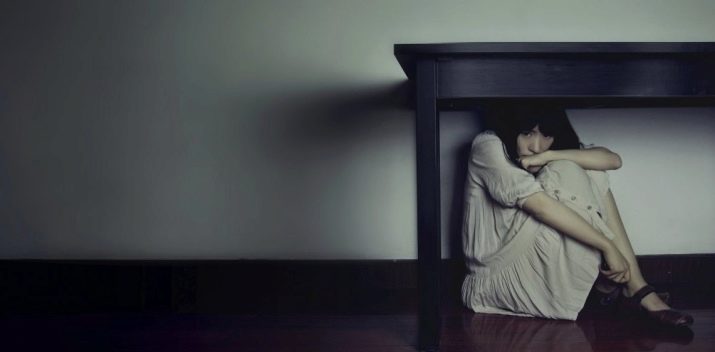
Among other things, it is important that an acrophobic patient in critical situations has an accompanying loved one or just a confidant - someone who can help in difficult times.
American psychiatrists have studied acrophobia for many years and their survey results demonstrate that, according to the vast majority of those suffering from a phobia of height, these people cannot control themselves, control feelings, decisions and their actions when they are in an anxiety state in a critical situation for themselves.
Phobia sufferers say they think they will fall, and they also occasionally have a conflicting urge to jump. It should be noted, however, that almost all of the people interviewed had no visible symptoms of depression, and there was absolutely no propensity to commit suicide.
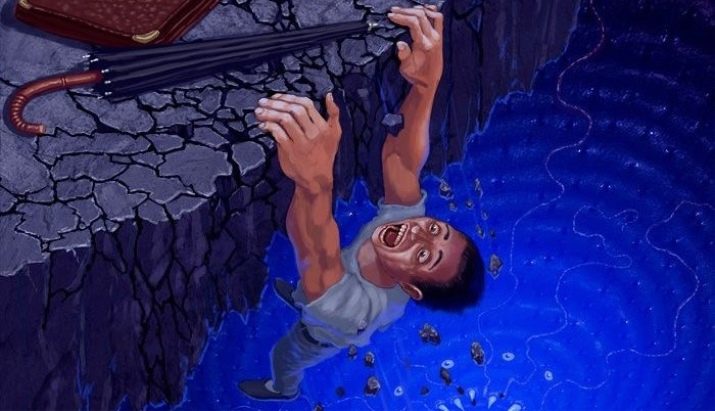
It is always extremely important to take into account that even a perfectly healthy individual can feel discomfort, weakness, or slight malaise in high altitude terrain. These are normal conditions and are not a sign of a phobia.
Causes of occurrence
Acrophobia is gender and age independent - it can occur in men, women, adults, adolescents, young children, or the elderly. Today, experts do not have a common and unified interpretation of the causes of acrophobia. It is generally accepted that such a disorder arises on the basis of unfavorable external and internal factors that have a complex effect on the psyche.
The leading role in the formation and development of any kind of phobia is played by the conditions for the formation of a personality: it is from childhood that a predisposition to certain types of mental disorders can be laid. Very often, the fear of heights is determined in carriers of "burdened" heredity, that is, those who have a family history of mental abnormalities. Sometimes the phobia can be associated with organic damage to the structures of the brain.
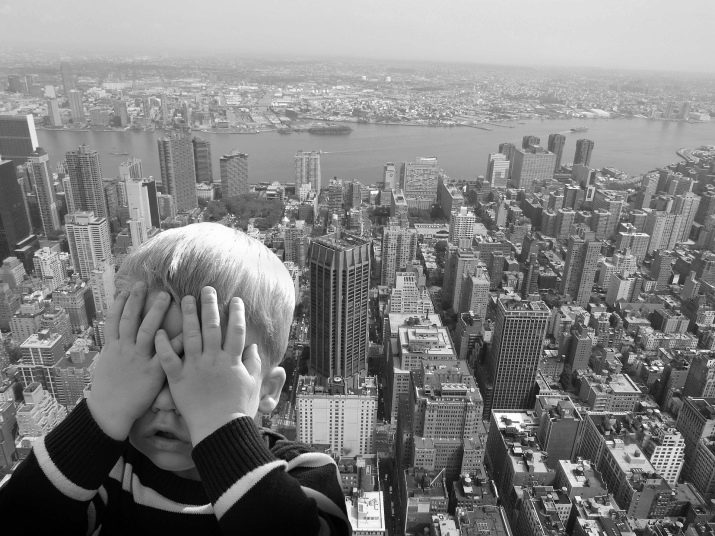
Often the following situations precede the onset of acrophobia.
- Regularly experienced stress: it can be difficult and responsible work or setbacks in your personal life. It is not even the factor that provokes stress that matters, but our reaction: if a person is restless and tends to panic from little things and such situations in life become more and more, then the risk of developing any phobic disorder increases many times over.
- Alcohol abuse and uncontrolled use of psychostimulants can also lead to phobias. Remember that you can not abuse alcohol, and medicines should be taken under the supervision and constant supervision of a doctor.
- Negative growing up experience combined with excessive severity, detachment and criticism of parents can also portend a phobia. Inconsistent upbringing and insufficient attention to children's fears or negative experiences from communication in a bad company lay in the child a predisposition to the development of a phobia, which can manifest itself at any age.



Among acrophobes, there are often individuals with a psychasthenic constitution, the dominance of such properties as suspiciousness, fearfulness, sentimentality, timidity, shyness, as well as excessive impressionability. Such people are prone to disorders from birth - they are very anxious and highly excitable personalities.
For many individuals with similar character traits, it is important to focus on a certain experience or episode of life, and excessive reflection often leads to phobias.
In some rare cases, a strong and irrational fear of high places can be directly related to personal negative experience, however, such a direct relationship is not recorded too often. Usually, for the formation of a phobia, many factors are needed in combination. It is rarely possible to identify any one, but an experienced physician will be able to identify the most dominant factors. To defeat a phobia, you will need to deal with its main causes.
Acrophobic disorder can be both congenital and caused by all kinds of negative circumstances from the long or recent past. This phobia is completely unrelated to the height itself. Often, acrophobia can appear in impressionable subjects with a rich imagination, therefore, children are often susceptible to it.
Some of these patients may have a fear of heights even in their sleep. Interesting is the well-known fact that acrophobia can cause severe anxiety and an attack of obsessive fear, even when not being at a height.
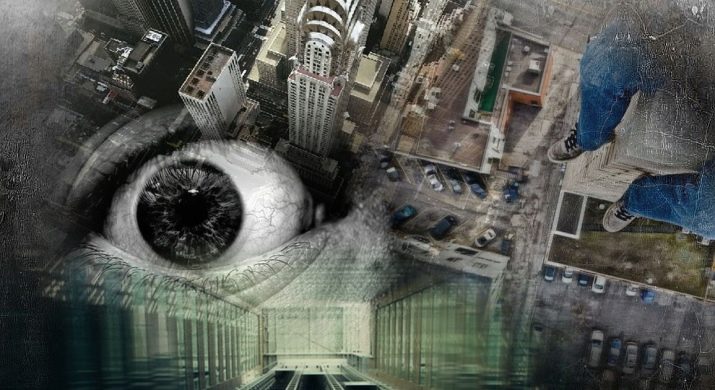
For people suffering from this phobia, it can often be enough to at least mentally imagine a fall from a high point.
Many professional psychologists agree that any true phobia is determined by the presence of any negative experience in the person experienced in the past. However, recent research in the field of psychology refutes this theory. Many of the people in their past did not have the slightest prerequisites for acrophobia. Acrophobia is a disease that may already be present in an individual from birth. Sometimes it is combined with intolerance to loud, harsh sounds - the reasons for this pattern have not yet been identified by psychologists.
In turn, some modern scholars argue that acrophobia is a prehistoric phenomenon... Our ancestors were very likely to fall from a height and crash when they lived in the wild and fought for survival with other individuals. Thus, acrophobia is rooted in evolutionary mechanisms; ancient people needed it for their own safety.
Research into this disorder is showing that acrophobia is not limited to humans. It can also be found in all types of animals with good eyesight. Sometimes, among the reasons for the appearance of acrophobia, a poorly developed human vestibular apparatus is distinguished, because it is he who regulates the balance of body position in space, and also provides a constant connection between our vision and the brain through the cerebellum. Thus, today among psychologists there is no unified theory of the appearance of acrophobia.
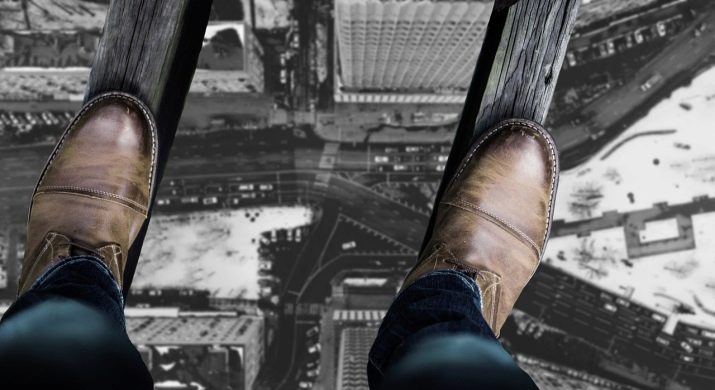
Symptoms
Symptoms of acrophobia are very variable: this disorder is characterized by both psychological manifestations of fear of falling from a height and psychosomatics. The obsessive fear of heights in each patient can manifest itself in different ways. Often, people exposed to the influence of acrophobia say that while they are at high-altitude points, they are unable to control their actions, thoughts, decisions, as well as possible actions. An extreme situation for an acrophobe creates a real panic. Along with this, a sick person may have a desire to jump off.

Sometimes acrophobia can be combined with anxiety and fear of slipping, as well as life self-doubt.
The acrophobe experiences dizziness, which can be combined with nausea, sometimes it turns into vomiting. Often, at the physiological level, there are problems with the gastrointestinal tract, for example, diarrhea. Breathing during the moment of panic becomes very uneven and quickened, and the pulse can either slow down or speed up. With fear in many sweating increases, pain in the heart, convulsions are felt, the pupils involuntarily dilate.
Sometimes in patients with this phobia, obvious muscle hypertonicity is also noticeable, motor activity increases, which is visible from the side - these are scattered movements with which the acrophobe tries to hide from danger. This behavior at altitude is really dangerous for humans.
In some situations, when fear and obsessive anxiety manifest themselves systematically, it would be most logical to turn to specialists. Phobia without the doctor's supervision can develop further and can become a serious problem that will spoil the patient's quality of life every day. In a patient suffering from acrophobia in advanced stages, freedom of movement is significantly limited, his lifestyle changes.

Ways to combat phobia
It is possible to overcome the phobia in the early stages on your own. In order to overcome fear, the patient must have sufficient willpower and enlist the support of close friends and relatives. Coping with a phobia can be relatively quick or lengthy, depending on the individual situation. In difficult cases, it is better to treat acrophobia under the supervision of a doctor - psychologist or psychotherapist.
Treatment by a specialist will be the most effective solution.
Recommendations will depend on the causes of acrophobia and on the degree of neglect of the disease. Sometimes it is proposed to speak out their fears or draw them in order to throw out emotions and defeat a phobia, and they are also engaged in group therapy with patients. Hypnosis is often used - such techniques allow you to quickly get rid of a phobia at any age. In difficult cases, you can cure a phobia with medications prescribed by a psychiatrist.
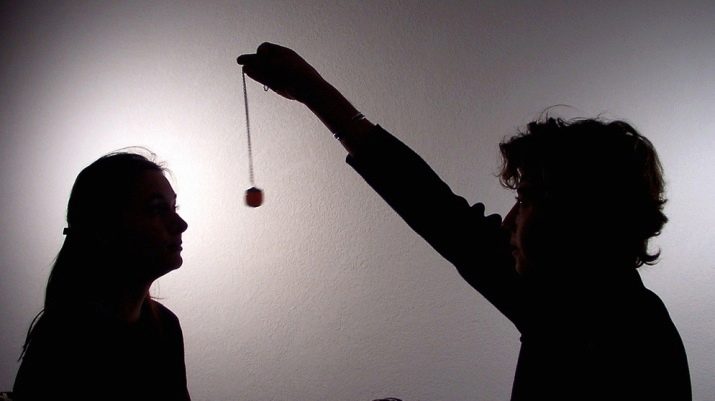
You can also contribute to the treatment yourself. For example, it will be useful to train the vestibular apparatus, gymnastics is perfect for this. Experts also consider yoga, meditation and breathing exercises to be extremely useful. - so you will calm down, relieve stress and learn to control yourself. Try meditating for a few minutes a day, and if you feel panic, remember to breathe correctly.
Other methods of relaxation will also be effective, for example, massage. You can also drink herbal infusions to calm down, provide yourself with proper nutrition, and limit your alcohol intake. It will help to distract from the phobia creativity, interesting work, sports and pleasant pastime with loved ones.
